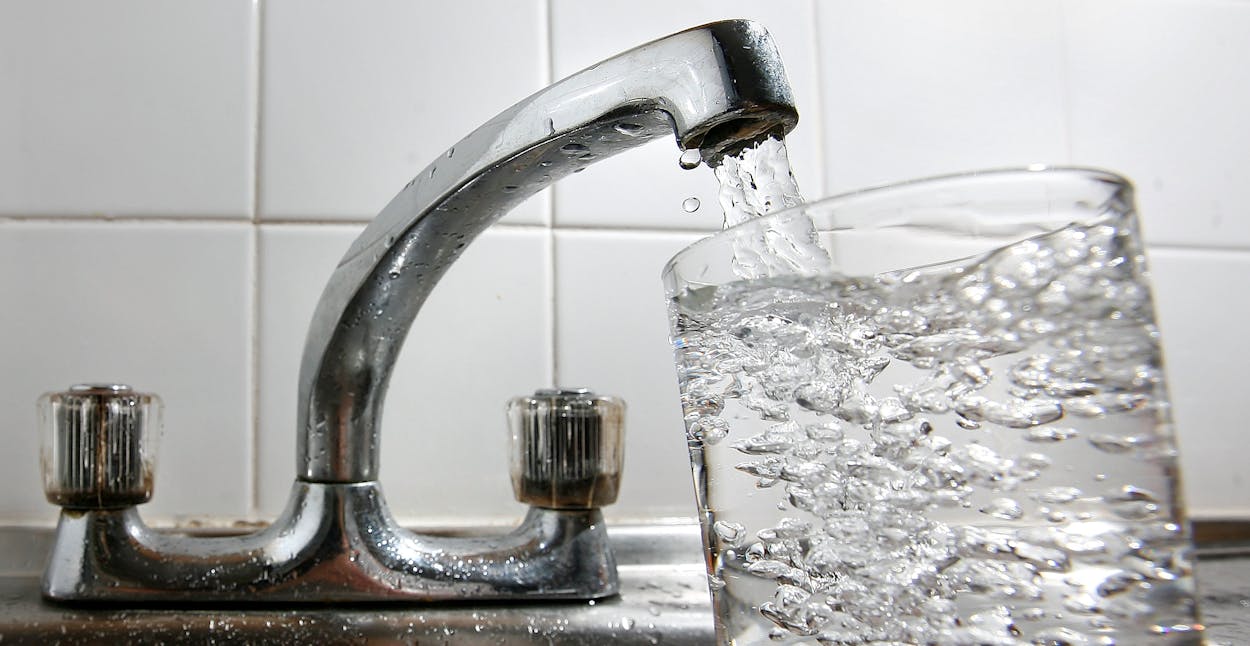The latest Texas community battling for clean water makes for a difficult Google search. Officially, the residents of the stretch of unincorporated Dallas County have their properties listed under “No Town.” Like Sandbranch, another small unincorporated community in Dallas County, “No Town” resides in a floodplain, making it complicated to install proper water lines in the area. Of the hundreds of unincorporated areas in Texas, the ones in Dallas County have a history of struggling for water. But residents of the different communities disagree on who should solve the problem.
The Dallas Morning News has been following Sandbranch’s most recent attempts to bring clean water to their community, and their decision to leave county officials out of it. The well water that Sandbranch residents used to rely on became contaminated decades ago. The people in Sandbranch have been in communication with county officials, most frequently County Commissioner John Wiley Price, to end their problem for years, only to have projects fail and funds run out. Now, though they’re asking for the county’s support in other areas, the community of about 90 is determined to get clean water without the county’s money.
Sandbranch recently established a water board, which has applied for federal grants to hire an engineer to develop a water plan. From there, Mark McPherson—a lawyer representing the community pro bono—says residents plan to use a combination of funds from the federal government, the state, donations, and nonprofit grants—basically anything but the county’s money—to finally secure clean water. “We’re not asking Dallas County for a dime,” McPherson told the Dallas Morning News. “They keep talking like Dallas County owns this problem. The landowners own this problem.”
But the debate over the county’s responsibilities to the residents of unincorporated towns has spilled over into “No Town.” Over the past year, some residents who had access to well water claim that flooding led to sewage contamination in their water supply. Dozens, possibly hundreds, of the 7,400 “No Town” residents don’t have clean water. The county hasn’t tested the wells yet, but with yellow-tinted water that a reporter stated “smells like feces,” residents are pretty sure the water’s no good. The contaminated wells have added them to Sandbranch’s decades-long fight, but they’re looking to the county for solutions.
Floodplains make things tricky. Water and trash pick-up are hefty financial investments, and county commissioners aren’t sure how wise it is to put that much money into high-risk areas for floods. John Wiley Price, along with commissioners Elba Garcia and Mike Cantrell, believe that the best option for residents in floodplains is to relocate. “That’s the only way,” Price said. “If this was a business proposition, we wouldn’t even be talking about [building water lines]. We’d be talking about relocation.”
The major problem for Sandbranch residents is that none of them want to move. When residents of both unincorporated communities talk about their towns, they often describe it as the ideal living arrangement—except for the lack of running water. It’s the pleasantries of a close country community that have kept families in those areas for generations. Some aren’t willing to give that up, even for clean water.
Although Dallas County hasn’t yet provided details for their relocation plans, they plan to present them in September. The county offered residents of Sandbranch the option to relocate a decade ago, and 36 families left; about 50 households chose to stay. It’s not clear how “No Town” residents will react to whatever the county’s plans entail, but hopefully the plan can provide some relief for Dallas’s unincorporated communities.








